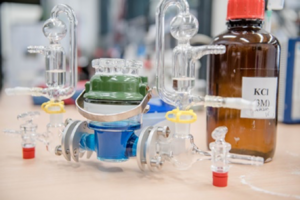A team of researchers has combined two concepts that make the system as efficient as precious metal catalysts.
Fuel cells that work with the enzyme hydrogenase are, in principle, just as efficient as those that contain the expensive precious metal platinum as a catalyst. However, the enzymes need an aqueous environment, which makes it difficult for the starting material for the reaction – hydrogen – to reach the enzyme-loaded electrode. Researchers solved this problem by combining previously developed concepts for packaging the enzymes with gas diffusion electrode technology. The system developed in this way achieved significantly higher current densities than previously achieved with hydrogenase fuel cells.
In the journal Nature Communications, a team of researchers from the Center for Electrochemical Sciences at Ruhr-Universität Bochum (RUB), the Max Planck Institute for Chemical Energy Conversion, and the University of Lisbon, describes how they developed and tested the electrodes. The article was published on 9 November 2018.
Please find further information in the <link http: news.rub.de english press-releases _blank external-link-new-window internal link in current>press release of the RUB.
Original publication: Julian Szczesny, Nikola Marković, Felipe Conzuelo, Sónia Zacarias, Inês A.C. Pereira, Wolfgang Lubitz, Nicolas Plumeré, Wolfgang Schuhmann, Adrian Ruff: A gas breathing hydrogen/air biofuel cell comprising a redox polymer/hydrogenase-based bioanode, in: Nature Communications, 2018, <link https: www.nature.com articles s41467-018-07137-6 _blank external-link-new-window internal link in current>DOI: 10.1038/s41467-018-07137-6

